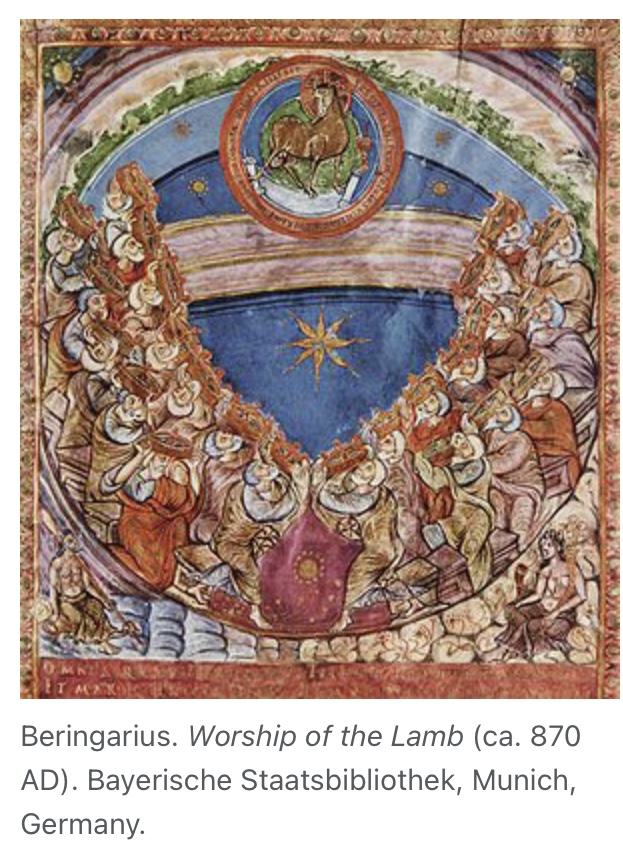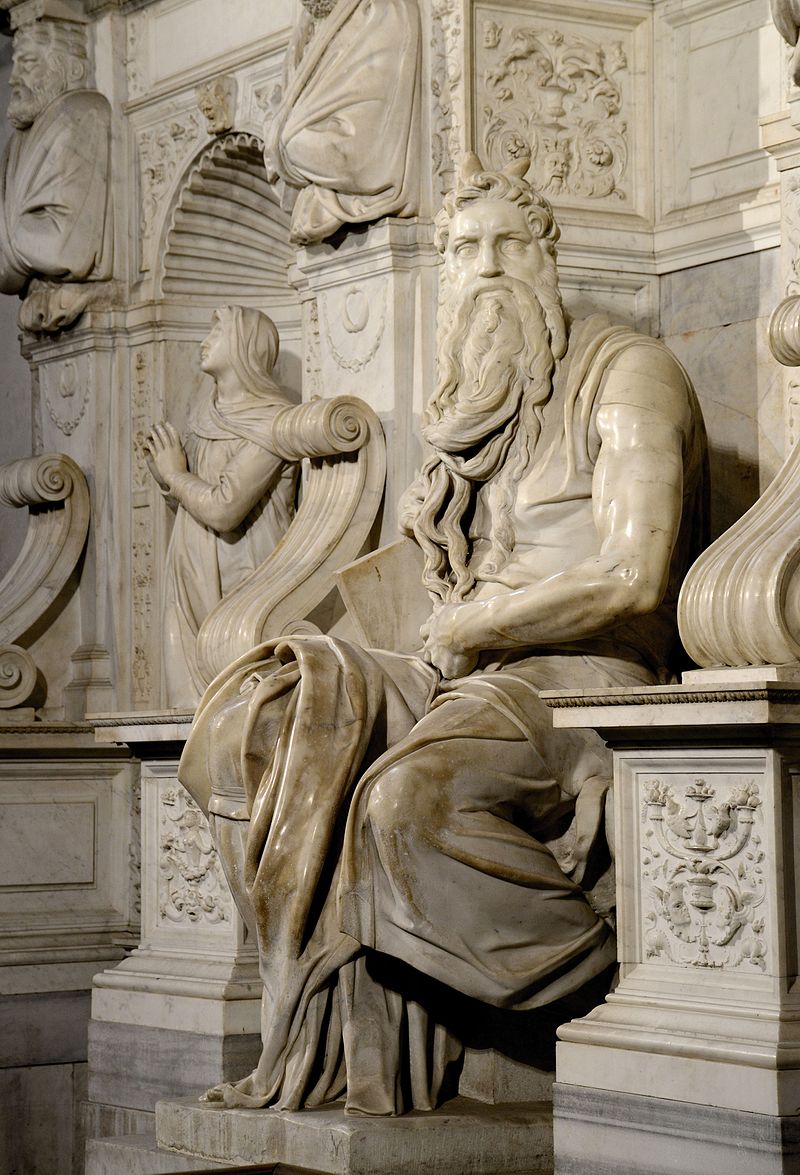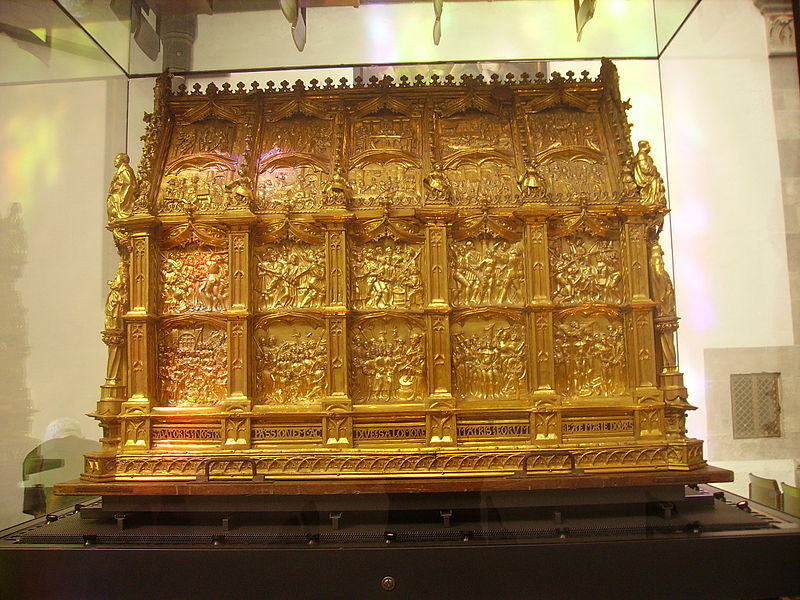
After these things I looked, and behold, a great multitude which no one could number, of all nations, tribes, peoples, and tongues, standing before the throne and before the Lamb, clothed with white robes, with palm branches in their hands…. (Apocalypse 7:9)
The book of the Apocalypse is built on a series of sevens–seven letters, seven seals, seven bowls, seven trumpets, etc. Often there is a pause or intermission between the sixth and seventh event in each series and the seer describes another vision or event that interrupts the series-of-seven. This vision of the great multitude comes as such a pause between the sixth and the seventh seals which the Lamb is opening. This vision of the multitude has two aspects: the seer beholds the 144,000 redeemed from the tribes of Israel and then he beholds the great multitude from all the nations and languages.
The 144,000 is symbolic of all Israel; it is the 12 tribes x 12 apostles x 1,000. It is complete. Full. It is a vast throng of believers, too many to actually count. Modern readers often see the 144,000 as the Jewish-Christian version of the “great multitude” of Gentile-Christians which the seer also beholds. But the original intent of the author was unlikely to distinguish Jewish and Gentile believers. One of the important concerns of the Gospel-Epistles-Apocalypse of St. John is who the authentic heirs of Abraham are; who are the “real Jews” is an issue in all the texts attributed to St. John and the answer is always, “Those who accept Jesus as the Messiah, whether they are biological descendants of Abraham or not, are the true Israel.”
The 144,000 have been marked with the seal of the Lamb–a common description of the anointing with oil/chrism following baptism. Having been sealed with chrism, the 144,000 make their confession, i.e. are slain because they acclaim Jesus as the Messiah. Martyrs for the true faith much as the Maccabees were martyred for refusing to compromise the faith to accommodate with the Greco-Syrian culture prevalent in their society.
The great multitude robed in white with palm branches are also martyrs. (Some readers suggest the 144,000 are the saints on earth and the great multitude are those same saints in heaven.) The palm branches, always indications of victory (1 Maccabees 13:51, 2 Maccabees 10:7), also suggest the feast of Tabernacles (Succoth), which is celebrated in the autumn. Succoth involved processions with palm branches and the building of booths for the people to live in for 8 days (Leviticus 23:33-36, Nehemiah 8:13-18). It was the celebration of God’s care for Israel in the wilderness after the exodus; it was also understood as a celebration which anticipated the Messiah (Zechariah 14:16-19). In both cases, it is God dwelling with his people which is the focus of the celebration.
There are Christian celebrations of Passover-Easter and Shavuot-Pentecost but no Christian equivalent of Succoth; the Church herself is the ongoing feast of Succoth. The Church is the company of those “who shall not hunger or thirst, neither scorching wind nor sun shall smite them, for he who has pity on them will lead them, and by springs of water [he] will guide them” (Isaiah 49:10). It is in the New Jerusalem that Tabernacles is fulfilled, when God will provide “water from the spring of the water of life” (Apoc. 21:6) and wipe away all tears (Apoc. 21:4).


